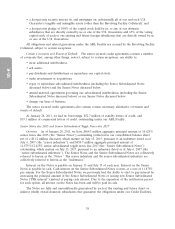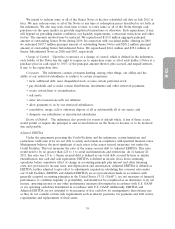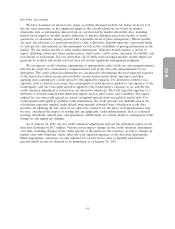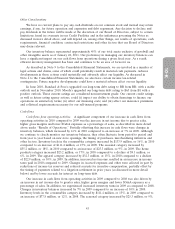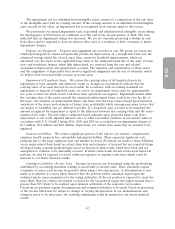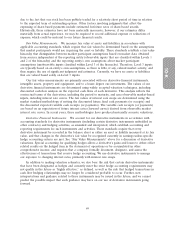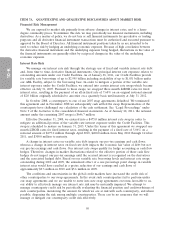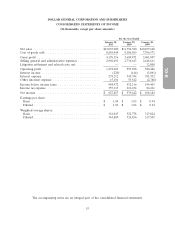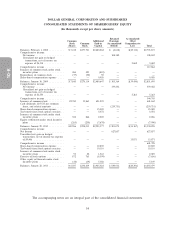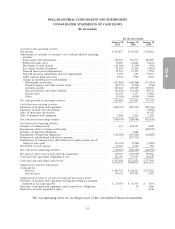Dollar General 2010 Annual Report Download - page 123
Download and view the complete annual report
Please find page 123 of the 2010 Dollar General annual report below. You can navigate through the pages in the report by either clicking on the pages listed below, or by using the keyword search tool below to find specific information within the annual report.
10-K
to redeem outstanding Notes with a total principal amount of $400.9 million at a premium, and used
cash generated from operations to repay $336.5 million outstanding principal amount on our Term
Loan Facility. We had no borrowings or repayments under the ABL Facility in 2009. In addition, we
paid a dividend and related amounts totaling $239.7 million using cash generated from operations.
In February 2008, we repaid outstanding borrowings of $102.5 million under our ABL Facility, and
have had no borrowings outstanding under the ABL facility since that time. Also during 2008, we
repurchased $44.1 million principal amount of our outstanding Senior Subordinated Notes.
Critical Accounting Policies and Estimates
The preparation of financial statements in accordance with U.S. GAAP requires management to
make estimates and assumptions that affect reported amounts and related disclosures. In addition to
the estimates presented below, there are other items within our financial statements that require
estimation, but are not deemed critical as defined below. We believe these estimates are reasonable and
appropriate. However, if actual experience differs from the assumptions and other considerations used,
the resulting changes could have a material effect on the financial statements taken as a whole.
Management believes the following policies and estimates are critical because they involve
significant judgments, assumptions, and estimates. Management has discussed the development and
selection of the critical accounting estimates with the Audit Committee of our Board of Directors, and
the Audit Committee has reviewed the disclosures presented below relating to those policies and
estimates.
Merchandise Inventories. Merchandise inventories are stated at the lower of cost or market with
cost determined using the retail last-in, first-out (‘‘LIFO’’) method. Under our retail inventory method
(‘‘RIM’’), the calculation of gross profit and the resulting valuation of inventories at cost are computed
by applying a calculated cost-to-retail inventory ratio to the retail value of sales at a department level.
The RIM is an averaging method that has been widely used in the retail industry due to its practicality.
Also, it is recognized that the use of the RIM will result in valuing inventories at the lower of cost or
market (‘‘LCM’’) if markdowns are currently taken as a reduction of the retail value of inventories.
Inherent in the RIM calculation are certain significant management judgments and estimates
including, among others, initial markups, markdowns, and shrinkage, which significantly impact the
gross profit calculation as well as the ending inventory valuation at cost. These significant estimates,
coupled with the fact that the RIM is an averaging process, can, under certain circumstances, produce
distorted cost figures. Factors that can lead to distortion in the calculation of the inventory balance
include:
• applying the RIM to a group of products that is not fairly uniform in terms of its cost and
selling price relationship and turnover;
• applying the RIM to transactions over a period of time that include different rates of gross
profit, such as those relating to seasonal merchandise;
• inaccurate estimates of inventory shrinkage between the date of the last physical inventory at a
store and the financial statement date; and
• inaccurate estimates of LCM and/or LIFO reserves.
Factors that reduce potential distortion include the use of historical experience in estimating the
shrink provision (see discussion below) and an annual LIFO analysis whereby all SKUs are considered
in the index formulation. An actual valuation of inventory under the LIFO method is made at the end
of each year based on the inventory levels and costs at that time. Accordingly, interim LIFO
calculations are based on management’s estimates of expected year-end inventory levels, sales for the
year and the expected rate of inflation/deflation for the year and are thus subject to adjustment in the
45





